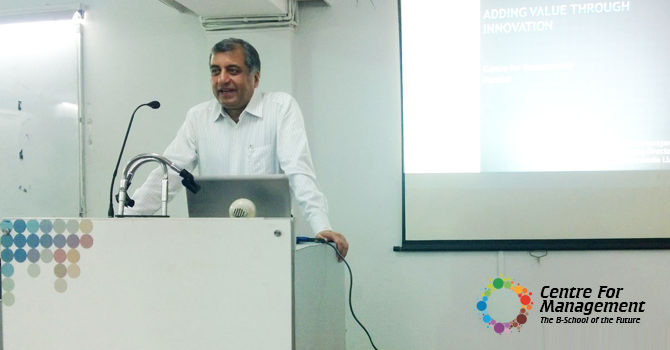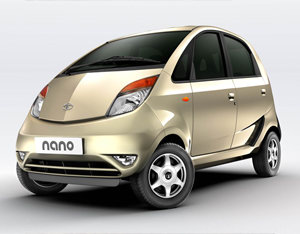Search
"Identify and address opportunity gaps to succeed in today's world" Sunder Hemrajani, Managing Director, Times Innovative Media Ltd.
October 19, 2013

In his presentation titled ‘Adding Value Through Innovation’, Mr. Hemrajani told Thadomal Shahani Centre for Management’s first-year PGDBM students that if there was one thing that tied together all the big brands that eventually met their demise, it was the fact that they took their position for granted and did not change with the times.
“Earlier, success was measured by the ability to achieve efficiency. Today, that is a given. Now and for the next 20 years, to compete for the future, you have to address the opportunity gap to grow,” said Mr. Hemrajani.
Mr. Hemrajani shared the three-box approach of Vijay Govindarajan, widely regarded as one of the world’s leading experts on strategy and innovation: Manage the present, selectively forget the past, and create the future. Leaders need to operate in all three boxes simultaneously. With this approach as the backdrop, Mr. Hemrajani took the students through 3 case studies of companies who succeeded or failed to innovate strategically.
Golden Sleep Campaign
Mr. Hemrajani shared the success story of Procter & Gamble who set out to sell Pampers in China more than a decade ago, where disposable diapers just weren’t part of the cultural norm. Babies wore cloth diapers, or in many cases, no diaper at all.

So the company tried to identify the unmet needs of Chinese consumers. They discovered that the average Chinese household was willing to spend the cost of one breakfast (nearly 10 cents) for a good night’s sleep, undisturbed by a crying baby. So the diaper didn’t just need to be cheap, it also had to keep a baby dry for 10 hours and provide the comfort of cloth. So P&G added softness, increased the absorption capability of the diaper and moved manufacturing operations to China to eliminate shipping costs.
P&G also launched the “Golden Sleep” campaign in 2007, which included a viral campaign on the Pampers Chinese website, asking parents to upload photos of their sleeping babies to drive home the study’s sleep message. The ad campaign boasted “scientific” results, such as “Baby Sleeps with 50% Less Disruption” and “Baby Falls Asleep 30% Faster.”
Not surprisingly, the campaign was a huge success.
Tata Nano: Why Did it Fail?
Tata Motors wanted to develop an affordable car that would be a crossover vehicle for Indians who ride motorcycles. By doing away with most nonessential features, reducing the amount of steel used in its construction, and relying on low cost labour, the company introduced the Tata Nano and marketed it as a Rs. 1 lakh car, the cheapest car in the world. It was a recipe for resounding success and yet reality turned out differently.

Mr. Hemrajani asked students to give their opinions on why the Tata Nano failed. Many of the students pointed to the lack of proper branding. The factory shift, a delivery shortfall of 1 lakh units and safety issues were other reasons. Mr. Hemrajani added that there was also a sense of disappointment when the so-called Rs. 1 lakh car had an ex-showroom price ranging from Rs. 1.24 to Rs. 2.05 lakh. Additionally, Tata Motors had underestimated the already existing influence of the used car market.
This was then a clear example of a company that had failed to think innovatively while marketing a product that was nothing but innovative!
Grameen Bank: Empowering People

While Tata Motors ended up creating a sense of mistrust in the minds of consumers, Grameen Bank – a Nobel Peace Prize-winning microfinance organization and community development bank founded in Bangladesh – has become a success with its innovative ‘banking for the poor’ concept.
“Break the hierarchy, empower people,” is the motto Mr. Hemrajani says Grameen Bank adopted by offering credit to classes of people formerly assumed to be undeserving i.e. the poor, women, the illiterate and the unemployed. By fulfilling its objective to promote financial independence among the poor, the bank today has over 8 million borrowers, has distributed USD 11.35 billion in loans, and has 2,468 branches providing services to 80,257 villages.
In conclusion, Mr. Hemrajani told students the key to innovation is the readiness to fail. “We as Indians are reluctant to recognize failure. There is nothing wrong with failure. Keep experimenting and if you fail when you’re young, you have little to lose.” At the same time, he emphasized the need for discipline in innovation or creating a process-driven innovation engine that minimizes risks by taking a comprehensive view of several factors.



